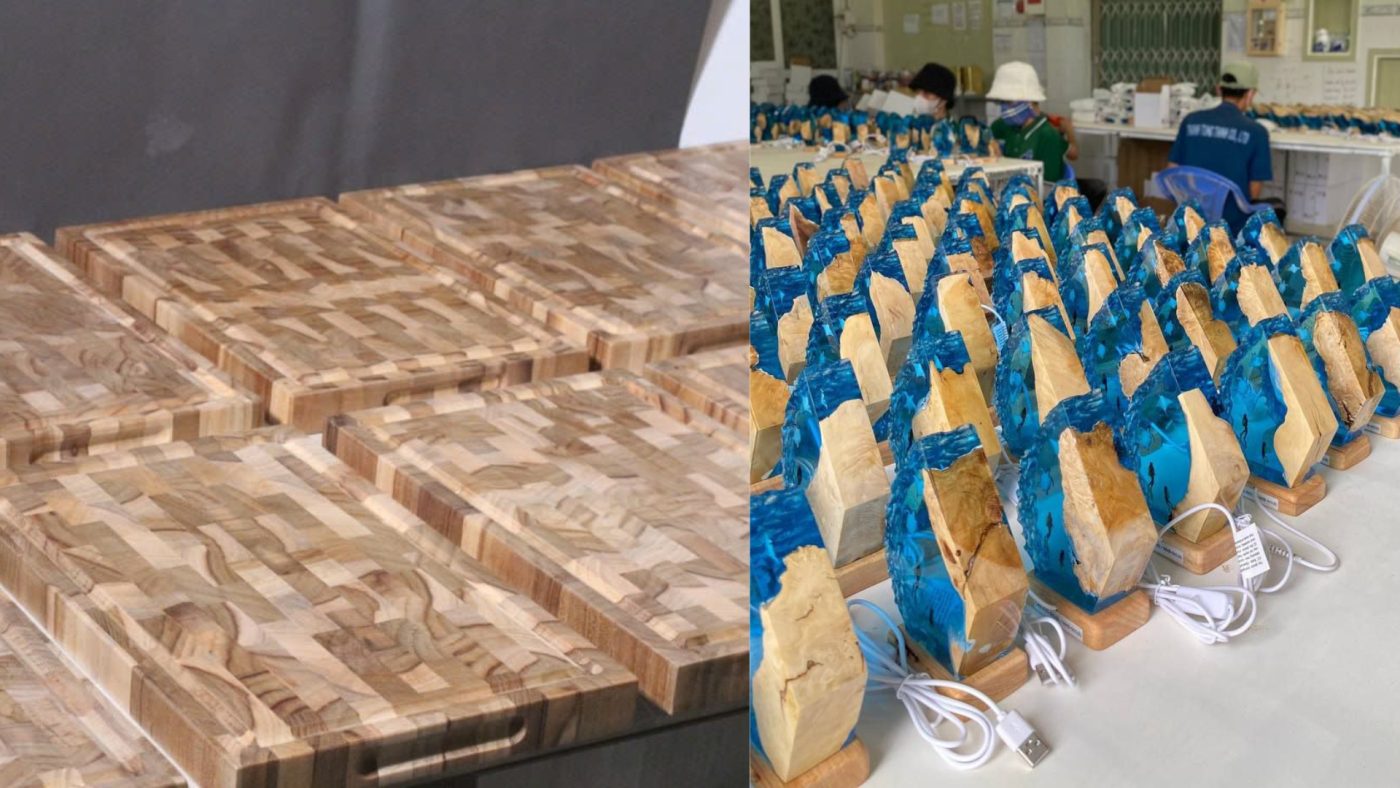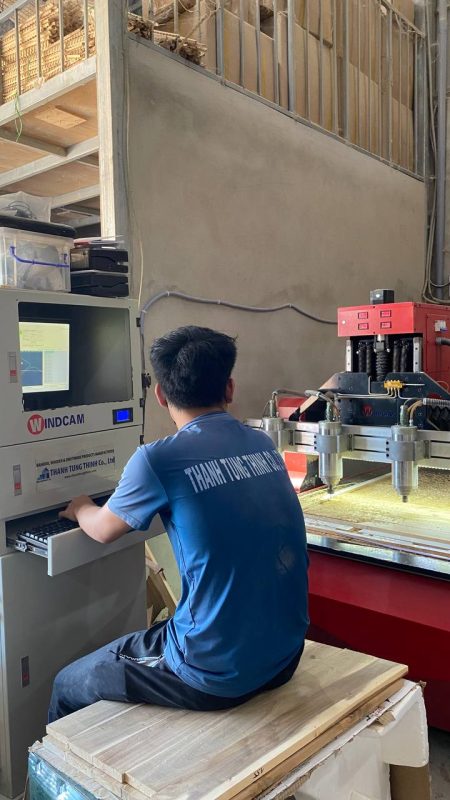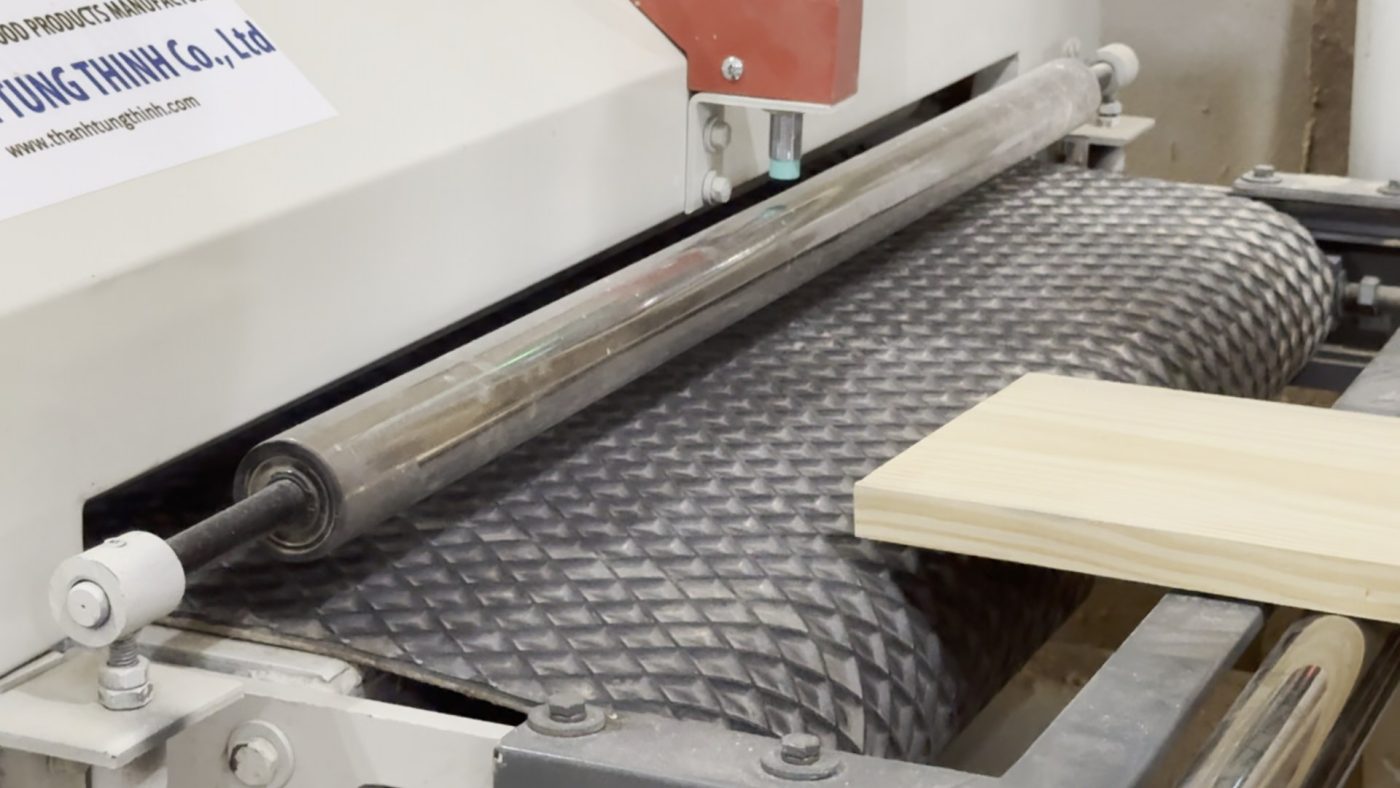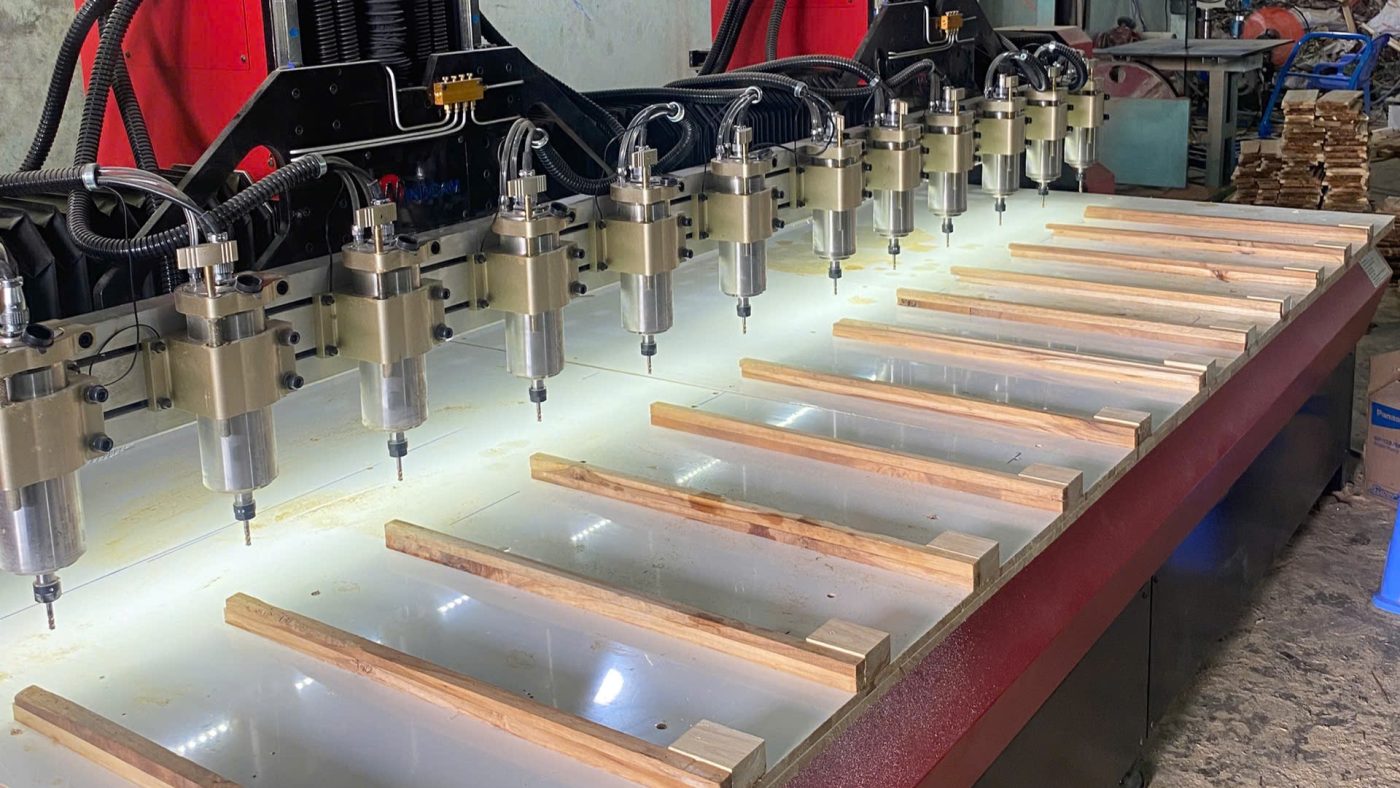Table of Contents
Wood processing technology has become the backbone of modern woodworking, reshaping how furniture, kitchenware, and home décor are produced around the world. In today’s competitive global market, traditional methods are no longer enough to meet the rising demand for precision, sustainability, and large-scale production. Manufacturers that embrace advanced technology are gaining a clear edge — not only in efficiency but also in quality and international compliance.
Introduction


From CNC machining that allows for millimeter-perfect cuts, to vacuum drying systems that protect against warping and cracking, wood processing technology is evolving faster than ever. Automation and smart factory solutions are streamlining entire production lines, enabling companies to deliver bulk orders faster while reducing labor costs. At the same time, eco-friendly surface finishing technologies are aligning the wood industry with global sustainability goals.
This transformation is especially significant for manufacturers in emerging markets such as Vietnam, where exports to the US, EU, and Japan are heavily regulated. Meeting strict quality standards requires more than skilled craftsmanship — it requires adopting advanced wood processing technology that ensures consistency, durability, and compliance with international certifications.
In this article, we’ll explore how innovation is shaping the future of wood manufacturing. We’ll look at key technologies such as CNC machining, advanced drying, surface finishing, and automation, while highlighting the benefits they bring to manufacturers aiming for global growth.
CNC Technology in Woodworking
One of the most significant breakthroughs in wood processing technology is the adoption of CNC (Computer Numerical Control) machines. Unlike traditional hand tools or even semi-automated saws, CNC machines operate using computer-guided commands, allowing manufacturers to produce highly precise and complex designs at scale.


Precision and Efficiency
CNC in woodworking ensures a level of accuracy that human labor alone cannot achieve. Whether cutting panels for furniture, carving intricate patterns for decorative pieces, or producing standardized parts for export, CNC machines deliver results with millimeter precision. This not only reduces errors but also minimizes raw material waste — an important factor when working with premium woods like teak or acacia.
Versatility in Applications
One of the biggest advantages of CNC technology is its versatility. Manufacturers can use it for:
- Cutting and shaping: producing boards, panels, and custom designs.
- Engraving and carving: adding fine decorative details that enhance product value.
- Drilling and slotting: essential for joinery in furniture manufacturing.
- Prototyping: quickly testing new product ideas before moving to mass production.
This flexibility makes CNC a vital tool not only for large-scale furniture factories but also for producers of smaller wooden items such as kitchenware, utensils, or customized packaging boxes.
Cost Reduction and Productivity Boost


Although CNC machines require an initial investment, the long-term cost savings are significant. Automated cutting reduces reliance on manual labor, shortens production time, and increases output capacity. Factories equipped with CNC technology can handle large export orders with shorter lead times, meeting the tight deadlines of international retailers and distributors.
Case Study: Vietnam’s Wood Industry
In Vietnam — one of the world’s leading wood product exporters — CNC machines are becoming a standard part of modern factories. Local manufacturers that once relied heavily on hand craftsmanship now combine skilled artisans with CNC precision, striking a balance between tradition and technology. This hybrid approach not only improves efficiency but also preserves the artistry that makes Vietnamese wood products attractive in global markets.
Meeting International Standards


Beyond efficiency, CNC technology helps manufacturers meet strict quality standards demanded by the US, EU, and Japanese markets. Uniform production ensures consistent sizing, smooth finishes, and durable joints — all crucial factors in passing international inspections and certifications.
Advanced Wood Drying Technology
Proper drying is one of the most critical stages in wood processing. Without it, even the most beautifully crafted wooden products can suffer from warping, cracking, or mold growth once they reach customers. Modern wood drying technology has revolutionized this stage of production, enabling manufacturers to achieve stable, durable, and high-quality outputs that meet the requirements of global markets.
From Traditional to Modern Drying Methods
Traditionally, many factories relied on air drying — stacking timber in open spaces and letting natural airflow remove excess moisture. While cost-effective, this method is time-consuming and heavily influenced by weather conditions, often leading to inconsistent results.
Modern techniques such as kiln drying and vacuum drying now set the standard. Kiln drying uses controlled heat and humidity to remove moisture evenly, while vacuum drying accelerates the process under low pressure, ensuring deeper and more uniform results. These methods drastically reduce drying time from months to just a few days, allowing manufacturers to scale up production efficiently.
Benefits of Advanced Wood Drying Technology
- Dimensional Stability: Properly dried wood resists warping, shrinking, or swelling, maintaining its shape and integrity over time.
- Enhanced Durability: Drying eliminates excess moisture that can cause decay, mold, or insect infestation.
- Improved Workability: Dried wood is easier to cut, sand, and finish, resulting in smoother surfaces and higher-quality products.
- Longer Product Lifespan: Customers benefit from wooden furniture and kitchenware that remain sturdy for years.
Compliance with International Standards
For exporters, controlling wood moisture content is not just about quality — it is a regulatory requirement. Many countries enforce strict guidelines to prevent pests and fungi from spreading across borders. By investing in advanced wood drying technology, manufacturers ensure their products meet the compliance standards of the US, EU, and Japanese markets.
Vietnam’s Advantage in Export
Vietnamese wood manufacturers, aiming to compete with China and other global suppliers, are increasingly adopting vacuum and kiln drying systems. This investment not only improves product quality but also strengthens Vietnam’s reputation as a reliable source of wooden furniture, kitchenware, and decorative items. The ability to guarantee moisture-controlled, stable wood is a key factor in winning long-term contracts with international retailers.
Supporting Sustainable Practices


Modern drying methods also support sustainability. By reducing waste caused by defective, warped, or cracked wood, manufacturers make better use of raw materials. In combination with FSC-certified sourcing, advanced drying becomes part of a broader eco-friendly strategy that global buyers value highly.
Surface Finishing Innovations
If drying makes wood stable, then finishing makes it attractive, durable, and market-ready. The final surface treatment is often what customers notice first — the smooth texture, vibrant color, or protective coating that sets one product apart from another. Modern wood surface finishing technology combines aesthetics with performance, enabling manufacturers to deliver products that are both beautiful and long-lasting.


Traditional vs. Modern Finishing Methods
In the past, wood finishing often relied on simple varnishes or oils. While these could highlight natural grains, they offered limited protection against moisture, scratches, or UV damage. Today’s global market demands more advanced techniques that balance functionality, durability, and sustainability.
Key Technologies in Wood Surface Finishing
- UV Coating: A fast-curing process that creates a hard, glossy finish resistant to scratches and chemicals. It is widely used in flooring, furniture, and high-end kitchenware.
- PU (Polyurethane) Coating: Offers excellent flexibility and durability, protecting against wear and moisture. PU remains a top choice for wooden furniture and countertops.
- Laminate & Veneer Applications: Provide cost-effective solutions for mass production, allowing a premium look without relying solely on solid wood.
- Nano Coating: The latest innovation, creating ultra-thin protective layers that resist water, oil, and stains. Nano coatings extend the lifespan of products while preserving natural wood aesthetics.
Eco-Friendly and Sustainable Solutions


Environmental responsibility is now a key buying factor. Many international retailers require wood products finished with low-VOC (volatile organic compound) or water-based coatings to minimize harmful emissions. Eco-friendly finishes not only appeal to environmentally conscious customers but also help manufacturers comply with stringent European and American regulations.
Benefits for Manufacturers and Buyers
- Enhanced Aesthetics: Finishing technologies highlight the natural beauty of wood grain, making each product more appealing.
- Durability: Protective coatings safeguard against everyday wear and tear.
- Market Value: High-quality finishes allow manufacturers to command higher prices and build stronger brand reputations.
- Compliance: Meeting eco-standards ensures access to premium international markets.
Case Study: Vietnam’s Export Edge
Vietnamese manufacturers specializing in kitchenware, utensils, and decorative boxes are increasingly adopting UV and water-based finishes. By offering eco-certified products, they attract distributors in Europe and North America who prioritize sustainable sourcing. This emphasis on modern wood surface finishing technology helps position Vietnam as a reliable partner in the global green retail movement.
Automation in Wood Manufacturing
While CNC machines and drying systems focus on specific stages of production, the real transformation comes when manufacturers integrate automation in wood manufacturing across the entire supply chain. Automation is no longer reserved for massive factories; even mid-sized woodworking companies are adopting it to stay competitive in the global marketplace.
What Automation Means for Wood Production


Automation refers to the use of robotics, conveyor systems, and software-driven processes that minimize manual intervention. In wood manufacturing, automation can cover nearly every stage: raw material handling, cutting, sanding, assembly, finishing, and packaging.
By synchronizing these processes, manufacturers not only reduce human error but also create highly efficient production lines capable of handling bulk orders with consistency.
Key Applications of Automation
- Robotic Arms: Used for lifting heavy timber, precision cutting, and repetitive tasks, reducing strain on workers.
- Automated Sanding and Polishing: Ensures smooth, uniform surfaces at a speed impossible for manual labor.
- Conveyor and Sorting Systems: Streamline material flow, reducing downtime between stages.
- Smart Packaging Lines: Automatically box and label products, preparing them for export with minimal human oversight.
Integration with ERP and MES Systems
Beyond physical machines, automation also involves software. Many wood factories now adopt ERP (Enterprise Resource Planning) and MES (Manufacturing Execution Systems) to monitor production in real-time. This integration allows managers to track raw materials, machine performance, and delivery schedules seamlessly, ensuring transparency across the supply chain.
Benefits of Automation in Wood Manufacturing


- Higher Productivity: Machines can operate continuously, significantly increasing output.
- Lower Costs: Reduced labor dependency lowers long-term production costs.
- Consistency and Quality: Every product is made to the same specifications, critical for meeting export standards.
- Scalability: Factories can easily handle large international orders without sacrificing lead time or quality.
Case Example: Global Competitiveness
In markets such as the US and EU, buyers expect consistent quality and fast delivery. Vietnamese manufacturers that have invested in automated production lines can now compete directly with larger Chinese suppliers. Automation enables them to shorten lead times, improve compliance, and reduce reliance on seasonal labor — a challenge that once limited growth.


Building Smart Factories
The next step in automation is the development of smart factories, where robotics, IoT devices, and AI-driven analytics work together to optimize every aspect of production. For wood manufacturers, this represents the future: a seamless, data-driven system capable of delivering precision, speed, and sustainability.
Benefits of Modern Technology for Wood Manufacturers
The adoption of CNC machines, advanced drying, modern finishing, and automation has redefined what it means to be a successful wood manufacturer. Beyond upgrading machinery, investing in modern wood processing technology creates measurable business advantages that directly impact profitability, customer satisfaction, and long-term competitiveness.
Increased Productivity
Traditional woodworking methods are limited by the speed and endurance of human labor. By contrast, modern machines operate with remarkable efficiency. CNC systems can produce hundreds of identical components in a fraction of the time, while automated sanding and finishing lines operate continuously without fatigue. This productivity boost allows factories to handle larger export orders while keeping costs under control.
Cost Efficiency


Although the initial investment in advanced technology may appear high, the long-term financial benefits are significant. Reduced material waste, lower labor costs, and fewer defective products all contribute to stronger profit margins. In addition, advanced drying and finishing reduce the risk of returns or product rejections due to defects — a hidden cost many exporters face when working with outdated methods.
Enhanced Quality and Consistency
For global buyers, consistency is key. Whether ordering 500 or 50,000 units, they expect every product to meet the same quality standard. Modern wood processing technology ensures this consistency. CNC precision guarantees uniform dimensions, advanced drying maintains stability, and eco-friendly surface coatings ensure durability. These factors build trust with international distributors and retailers.
Faster Time-to-Market
In today’s competitive landscape, speed is a decisive factor. Automated production lines and real-time ERP integration reduce bottlenecks, ensuring that bulk orders are completed and shipped on time. Faster lead times not only satisfy current buyers but also open opportunities with larger, more demanding clients.
Competitive Positioning in Global Trade


Manufacturers who embrace modern technology gain a clear advantage over those still relying on traditional craftsmanship alone. They can confidently approach high-value markets such as the US, EU, and Japan, where quality standards are uncompromising. By demonstrating the use of advanced technologies, suppliers also strengthen their brand image as reliable, forward-thinking partners.
Long-Term Sustainability
Beyond immediate financial benefits, modern technology also contributes to sustainability — a growing demand in the global retail sector. Reduced waste, energy-efficient drying, and eco-friendly finishing all support responsible production. Manufacturers that highlight these practices can differentiate themselves in the green retail movement.
Future Trends in Wood Manufacturing
The global wood industry is at a turning point. While CNC, drying, finishing, and automation already deliver measurable improvements, the next decade promises even greater transformations. Emerging innovations such as AI-driven production, IoT connectivity, and sustainable material sourcing are setting the stage for a new era of smart, eco-friendly wood manufacturing.
Smart Factories and Digitalization
The concept of the smart factory is becoming a reality for leading manufacturers. By combining robotics with real-time data analytics, factories can monitor every stage of production with unmatched precision. Machines equipped with sensors automatically adjust cutting speeds, drying cycles, or coating applications based on live conditions. This not only improves efficiency but also minimizes waste and energy consumption.
AI and Predictive Maintenance


Artificial Intelligence is beginning to play a role in wood processing technology by predicting machine maintenance needs and optimizing workflows. Instead of waiting for a breakdown, AI systems can detect anomalies early, reducing downtime and extending equipment lifespan. Predictive analytics also helps managers plan production schedules, ensuring raw materials and machines are used at peak efficiency.
IoT-Connected Production Lines
The Internet of Things (IoT) allows machines, sensors, and management systems to communicate seamlessly. In wood manufacturing, IoT applications include tracking moisture levels in real time, monitoring energy consumption, and automatically logging compliance data for export. For international buyers, this translates into greater transparency and confidence in supply chain reliability.
Sustainable and Recycled Materials


Sustainability will remain a top priority for global wood buyers. Manufacturers are exploring ways to recycle wood waste into new products, reduce reliance on virgin timber, and adopt certified, eco-friendly finishes. By embracing circular production models, factories not only lower costs but also meet the rising demand for environmentally responsible goods.
Meeting Global Consumer Expectations
End consumers are increasingly conscious of sustainability and quality. Retailers are responding by sourcing from suppliers who can prove ethical and eco-friendly practices. Manufacturers that adopt next-generation technologies will be best positioned to meet these expectations, securing long-term partnerships with global distributors.
Vietnam and the Future of Wood Exports
Vietnam, already among the world’s top wood exporters, has the opportunity to leap ahead by adopting these innovations. By combining traditional craftsmanship with smart technologies, Vietnamese manufacturers can strengthen their role as trusted suppliers in high-value markets such as the US and Europe.
Conclusion


The woodworking industry has entered a new era where tradition meets innovation. From CNC machining and advanced drying to eco-friendly finishing and full-scale automation, modern wood processing technology is no longer a luxury — it is a necessity for manufacturers aiming to compete in international markets. These technologies deliver measurable advantages: higher productivity, cost efficiency, consistent quality, faster lead times, and long-term sustainability.
At the same time, future trends such as smart factories, AI-driven analytics, IoT connectivity, and sustainable sourcing will continue to reshape the industry. Manufacturers that embrace these innovations today are not only positioning themselves for immediate success but also securing their place in the global supply chain of tomorrow.
For international buyers, choosing a supplier that invests in modern technology means more than just reliable delivery. It means partnering with a manufacturer that values efficiency, compliance, and sustainability — qualities that reflect directly on their own brand reputation.
If your business is looking to source high-quality wooden products — from kitchenware and utensils to furniture and decorative items — now is the time to connect with forward-thinking manufacturers.
Contact us today to explore advanced wood processing solutions and request a customized quotation for your market needs.


